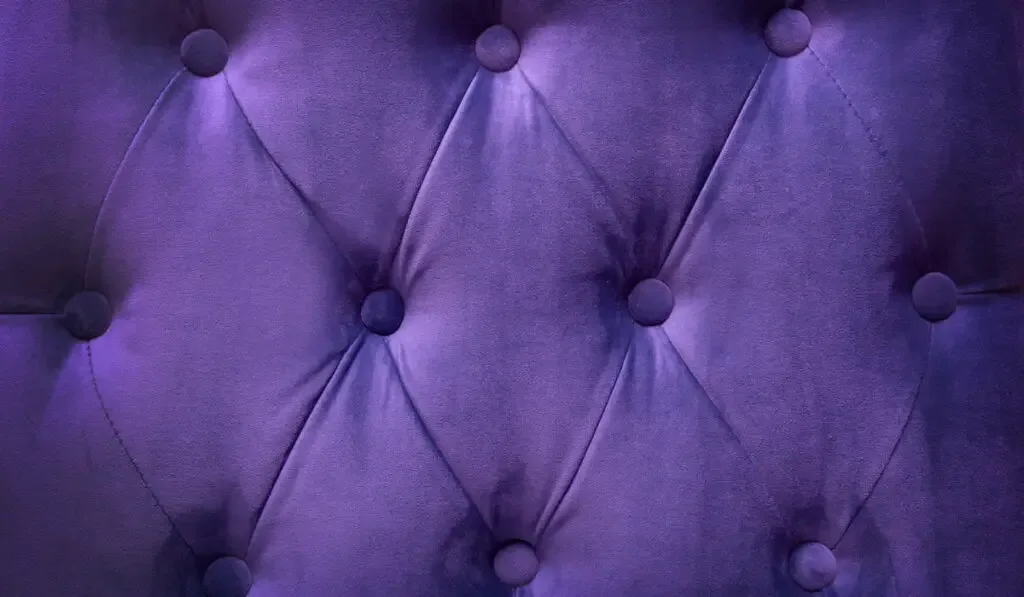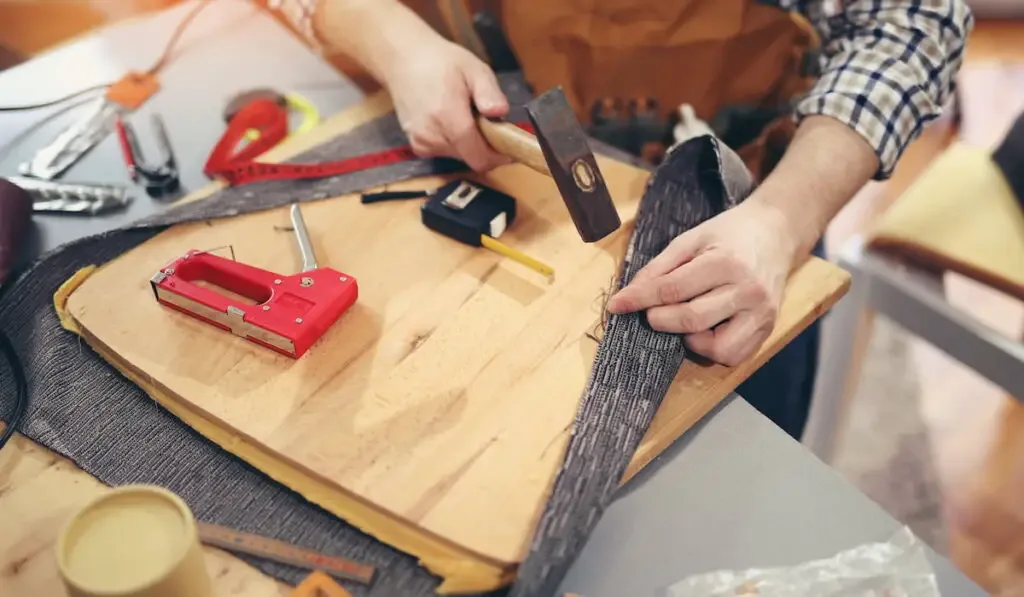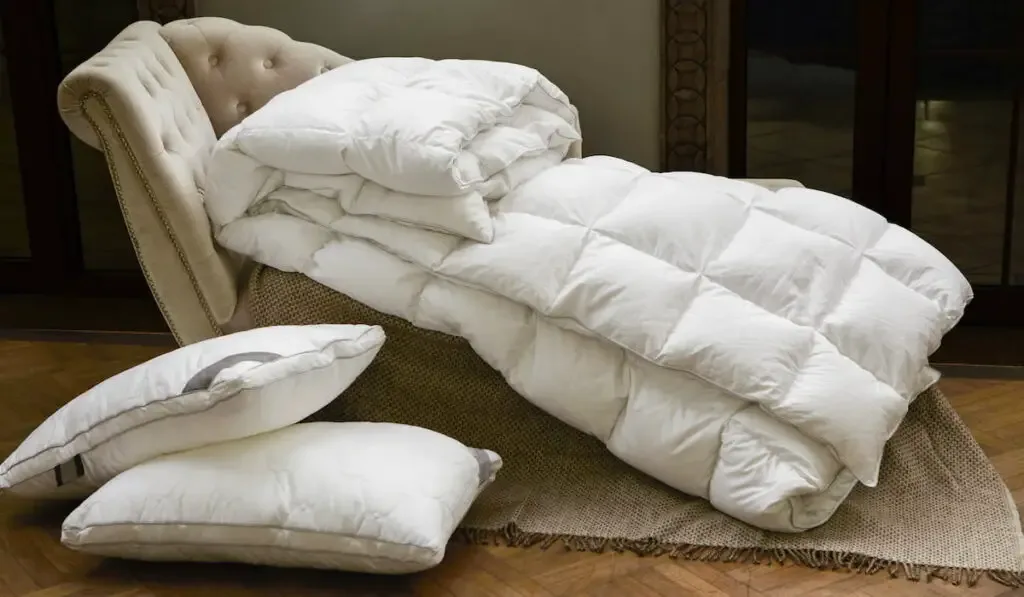Quilting is a valuable skill to learn for anyone who needs to fix an outfit on the fly, join together layers of fabric or simply get the most out of reused cloths and materials. But the usefulness of a skilled quilter goes far beyond that. What happens when your couch cushion starts to fray or your household cat begins using the armrest as a scratching post?
Can you use quilting fabric to cover up the imperfections of upholstery?
Absolutely, you can use quilting fabric to hide upholstery imperfections. There is no shortage of things you can renovate with a well-placed needle and thread, and the coating of your couch is no different.
By utilizing more resilient fabrics and making sure you follow the relatively simple process of preparing and choosing the material, you will have little to no issue.
So whether you want to cover up some unsightly openings or are looking to reupholster the entirety of your couch, this article has you more than covered!

What Fabrics To Use
When choosing a material for upholstery, you want resilient fabrics and fibers that can withstand more wear and tear than a patchwork quilt or homemade garment would ever have to endure.
When furniture is being made, the material that covers it is typically examined through a process that is called the double rub test. This test is used to recreate the wear and tear of everyday use by consumers and has become something of a gold standard for most furniture manufacturers.
A minimum number for the double rub test typically sits above 15,000. If you are only looking to upholster pillows or other furniture accessories you can likely get away with around 9,000 or more.
It can also be beneficial to seek out fabrics that are more resilient to sun damage, staining, and spills.
Cotton
Cotton is the most popular fabric for furniture you will likely find on the market, due to its resiliency, comfortable feel, and inexpensive price tag.
While being both durable and unlikely to fade, it’s good to be careful when choosing cotton as it can stain quite badly and also may collect the soot in the air and the grime from pets, clothes, and everyday use.
Leather
Leather is such an incredibly tough fabric that the name itself is used to describe something as resilient and long-lasting.
If you want a material that is built for the long haul then you will have a hard time finding something more impressive than leather. It also is very easy to clean for pet owners as the hair will not stick to the material.
Olefin
Olefin can have a visual appearance strikingly similar to wool and is one of the more popular synthetic fabrics on the market. The incredible durability of Olefin allows the furniture to endure a very heavy amount of usage before the fabric will start to decay in quality. It is also one of the easier fabrics to clean.
Wool
Another durable material that will keep its resolve after a long period of use. Wool is typically very resistant to wrinkles along with other visual signs of fabric degradation.
The downside to this popular cloth is that water damage can lead to an unpleasant aroma that can prove hard to get rid of. Some people may also find wool to be itchy and uncomfortable, so if that is you, steer clear.
Silk
If you want to put down a decent chunk of change on soft fabric and are not expecting a high amount of usage from the furniture you are renovating then silk may be for you. While it may be one of the most comfortable materials you will find, it is also more fragile than the previous alternatives.
It will need to be professionally cared for if it succumbs to water damage or stains, which on top of its notable price tag may dissuade more frugal quilters.

Tips for Reupholstering Furniture
Renovating a chair or couch with new upholstery can be a demanding and complicated project. We believe adding to the tedious and often frustrating nature of reupholstering is pointless and are going to give you a few easy tips to help make your next big home project far simpler!
Make Sure the Furniture Is High-Quality
The process of recovering a furniture piece is going to take quite a while and your time is important. Make sure those precious hours are well-spent before you begin adding fabric to your couch, chair, or loveseat. The best way to do this is by looking at what makes up the “skeleton” of the piece, is it pieces of plastic and particle board or is it a good quality wood?
If your furniture has a lean or wobble, then it is probably not structurally sound. This also goes for any creaking in the furniture itself, which is a good sign that it is not in the best shape and should not be reupholstered.
If you notice any pieces stripped off, smaller pieces such as nails and bolts missing, or deeply indented parts along the foundation then you are probably not looking at an item of furniture in its prime and should be rid of it.
Get More Fabric Than You Think You Will Need
Most quilters are probably very familiar with this tip, but it is worth repeating regardless. When buying fabric, it is easy to get less than you will need and think it is more than enough.
So to save yourself the headache of being almost done with a project only to see this glaring issue, try to give yourself a bit more wiggle room by adding some more fabric to your list of materials.
It can also be beneficial to get a color pattern that will not conflict with the rest of your room, even if you choose to change the look of it. So shoot for unremarkable or neutral patterns and colors.
If the Previous Layer of Upholstery Is Darker, Strip It
While it may seem easier and like less of a headache to simply leave the older material on underneath the new “skin” of your couch, it may end up showing through. If you want to skip a step in the reupholstering process and leave the old fabric on underneath, then the newer fabric must be darker or you will be able to see through it.
Imagine wearing a white T-shirt with a darker shirt underneath, the same thing goes for sofas and couches.
Clean the Inside Before Adding Upholstery
There are very few times in life that you will be able to clean out the internal parts of a couch like you will when adding new upholstery. This can be an important time to take a vacuum to the dusty sediment buildup found throughout the interior of your couch or chair.
If the product is built of wood, take some time to clean it (water and dishwashing soap work well, just dry it well after) before you begin to add a fabric over top of it. Anything you see that is normally obstructed by other parts of the furniture that could be cleaned, should be cleaned.

Wrapping Up
Adding a new layer of upholstery to older furniture that is still in good condition is a great way to save money and a valuable skill that can be transferred to several other parts of your life.
The process may be time-consuming and at times difficult, but all good projects are! So grab your needle, your best roll of fabric, and give your sectional a much-needed makeover!
